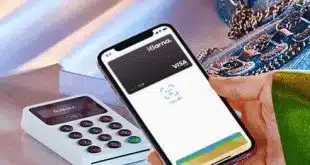Target Brands Inc. finally unveiled its long-rumored mobile-payments service. Announced Monday, Wallet resides in the Target app for iOS and Android devices.
Consumers can only enroll a Target RedCard, available as a debit or credit card, in the app. Target gift card enrollment is coming, too, the company says.
To pay, the consumer holds the app screen, which displays a bar code, against the bar code scanner at the point-of-sale checkout. She adds items, while in store, to the app by scanning the product’s bar code. Once the consumer taps “pay” in the Target app, and assuming the transaction is authorized, the POS system generates a printed receipt. Target had not responded to a Digital Transactions News inquiry at publication time.
Target, in a press release, says users will be able to pay and redeem offers in its Cartwheel service in a single action at the checkout. Target claims the in-store checkout time is reduced by one quarter compared to the time it typically takes, but provides no details about that.
Rumored for nearly two years, the Target mobile payment service comes after the 2016 demise of the CurrentC wallet from Merchant Exchange Consortium LLC, of which Target was a backer.
Target’s move makes a lot of sense, says payments consultant Richard K. Crone of San Carlos, Calif.-based Crone Consulting. Target’s Wallet, much like Wal-Mart Stores Inc. with Walmart Pay and Kohl’s Corp. with Kohl’s Pay, is more about competing against online retailers and establishing a relationship with the company’s best customers, he says. The services are about changing the in-store experience.
“For them to compete with Amazon, they have to have an active mobile-app experience,” Crone tells Digital Transactions News. Some retailers are adding buy-online-pickup-in-store options (also known as BOPIS), to counter online competitors. “They can’t do BOPIS without mobile payment,” says Crone.
Target’s decision to make only its proprietary cards available in Wallet is indicative of the Minneapolis-based retailer’s aggressive marketing push, Crone says. Target not only can offer consumers the usual 5% RedCard discount on purchases, but can also settle offers from its Cartwheel service in a single transaction. In this way. Target may benefit from increasing use of the app in its stores, and earn a payoff from combining multiple activities into a single transaction, Crone says.
“This is just the beginning,” he adds. A customer with a registered payment credential is known to the merchant. Once known, the merchant has a communication channel available. “Target, as with Wal-Mart, needs to reach the customer before she gets to the store,” Crone says. That communication has to continue inside the store, and during checkout and afterwards, he says.
In the long run, much more is coming from retailers as they look at what Amazon.com Inc. is doing with Amazon Go, a self-checkout service that is entirely app-based, Crone says. Target and Wal-Mart are trying to get ahead of the anticipated public launch of Amazon Go next year, he says, adding, “This is all preparation for competing with Amazon Go.”






